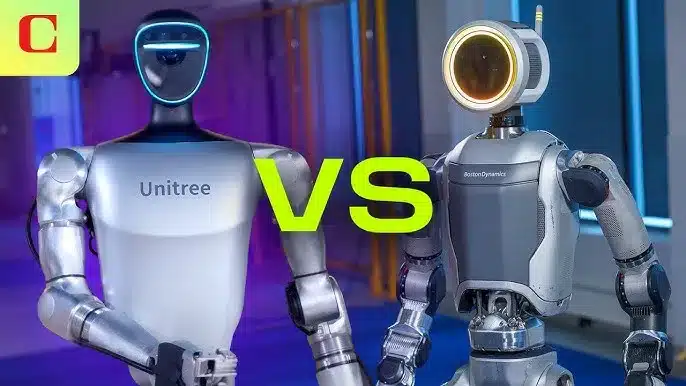Unitree’s Notable Entrance
Quite unexpectedly, Unitree Robotics has made a significant impact in the past month. Based in the vibrant tech hub of Hangzhou, China, this company has been steadily introducing a series of remarkable robotic creations. Let’s explore what they’ve brought to the table.
New Generation of Robotic Dogs
At the start of the month, Unitree revealed its latest robotic dog models G2 and G2-W. These are no ordinary machines. They demonstrated an impressive ability to traverse diverse terrains. For instance, they could smoothly move across rocky surfaces and muddy patches, maintaining stability and balance. Their design and engineering allowed them to adapt well to different ground conditions.
Comparison with Boston Dynamics’ Spot
When considering robotic dogs, Boston Dynamics’ Spot is a well-known name. Spot has long been recognized for its refined movements and advanced artificial intelligence. However, Unitree’s robotic dogs have their own advantage – cost. They offer a more affordable option, making them accessible to a broader range of users. This doesn’t mean compromising on quality; they still perform reliably in various scenarios.
Introduction of Humanoid Robots
Midway through the month, Unitree introduced its new humanoid robots. One model, like the Unitree H1, showcased some interesting capabilities. It could execute movements such as basic acrobatics, which demonstrated its flexibility and control. These robots are designed to interact with the environment in a more human-like way.
Contrasting with Boston Dynamics’ Atlas

Compared to Boston Dynamics’ Atlas, which is renowned for handling complex tasks in extreme environments, Unitree’s humanoid robots focus on being user-friendly and cost-effective. They provide an entry point for those interested in humanoid technology without the need for a large budget. Their programming interfaces are also made simpler, enabling even beginners to get started.
Technology Insights
Towards the end of the month, looking at the underlying technologies, Boston Dynamics has traditionally favored hydraulic drive systems. While this gives their robots strength, it also demands significant maintenance efforts and costs. Unitree, on the other hand, has adopted electric drive technology. This choice results in robots that are more energy-efficient and have lower maintenance requirements, like their E3 model.
AI Comparison
In the realm of artificial intelligence, Boston Dynamics’ AI is known for its ability to make quick decisions in complex situations. But Unitree’s AI is also making progress. Their motion control algorithms allow the robots to respond and adjust to changes in the environment, providing a good level of adaptability.
8. Conclusion: Unitree’s Growing Prominence
In summary, Unitree Robotics has shown that it is a company to watch. It’s not overshadowed by established names like Boston Dynamics. With its practical products, reasonable prices, and a growing customer base, Unitree is carving out its own space in the robotics domain. Whether you’re a technology enthusiast or a researcher, it’s worth keeping an eye on what they do next.
